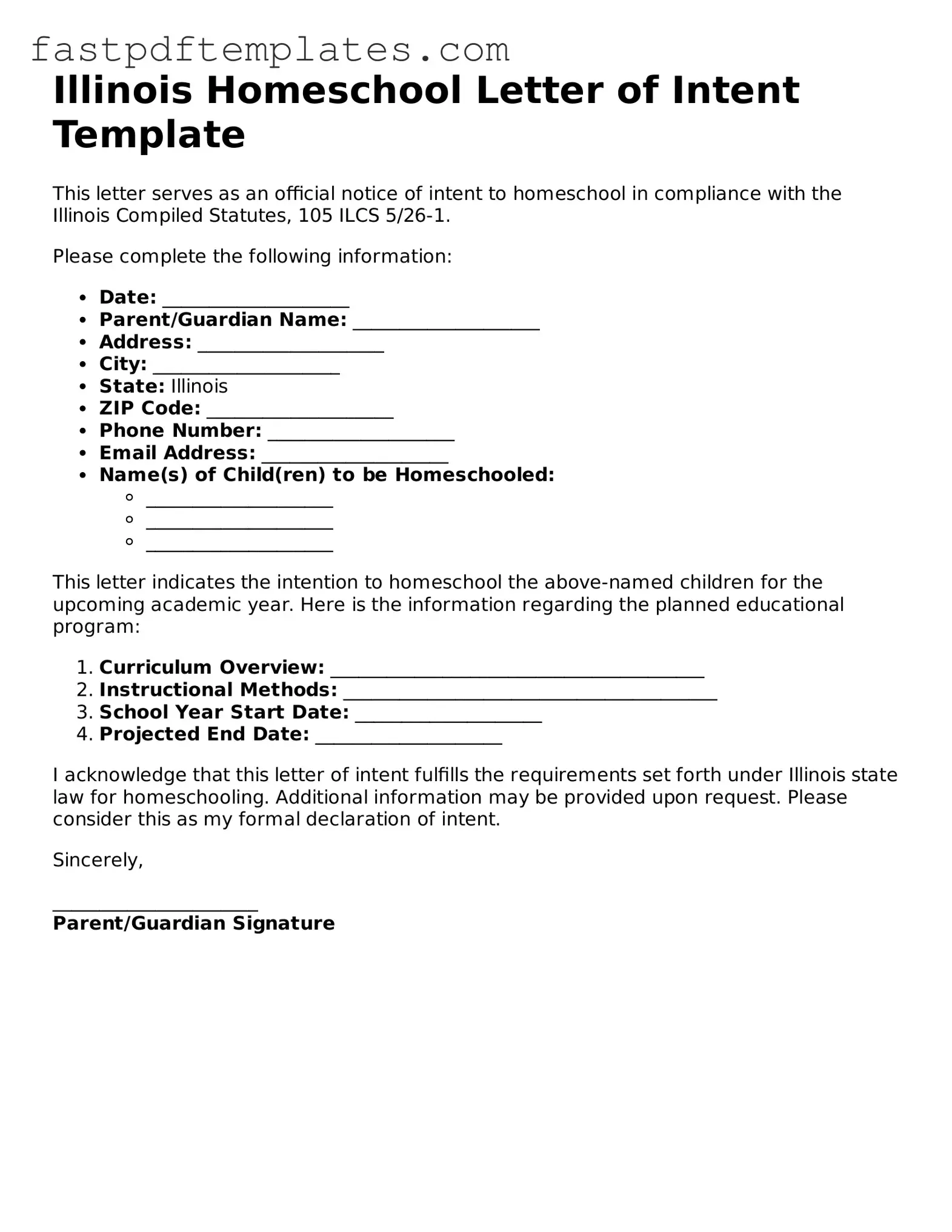The Illinois Homeschool Letter of Intent form shares similarities with the "Notice of Intent to Homeschool" commonly used in various states. This document serves as a formal notification to local school authorities that a parent or guardian intends to educate their child at home. It typically includes basic information about the child and the educational plan, just like the Illinois form, ensuring compliance with state regulations.
Another document akin to the Illinois Homeschool Letter of Intent is the "Educational Plan." This document outlines the curriculum and educational objectives for the homeschooling year. Parents create this plan to demonstrate their commitment to providing a structured educational experience, paralleling the intent expressed in the Illinois form.
The "Withdrawal Form" from public school is also similar. When parents decide to homeschool, they often submit this form to formally withdraw their child from the public school system. This document, like the Illinois Letter of Intent, serves as an official record of the transition from public education to homeschooling.
The "Home Schooling Registration Form" used in some states resembles the Illinois form as well. It requires parents to provide information about their homeschooling approach and curriculum. Both documents aim to establish a clear record of the family's educational intentions and ensure compliance with state laws.
The "Affidavit of Homeschooling" is another related document. This legal statement affirms that the parent is taking responsibility for their child’s education at home. Similar to the Illinois Homeschool Letter of Intent, it serves to notify educational authorities of the family's choice to homeschool and the commitment involved.
The "Curriculum Approval Form" can also be compared to the Illinois form. In some states, parents must submit their chosen curriculum for approval before homeschooling. This document, like the Letter of Intent, reflects the family's educational strategy and adherence to state requirements.
The "Homeschooling Compliance Checklist" is another document that shares similarities. This checklist helps parents ensure they meet all necessary legal requirements for homeschooling in their state. It aligns with the intent of the Illinois form to keep families informed about their obligations.
The "Annual Assessment Report" is relevant as well. This document is often required to demonstrate that homeschooled children are making adequate academic progress. While it serves a different purpose than the Illinois form, both documents emphasize accountability in the homeschooling process.
The "Statement of Educational Philosophy" can also be likened to the Illinois Homeschool Letter of Intent. Parents may submit this document to explain their educational approach and values. It complements the intent form by providing insight into the family's educational motivations and goals.
Lastly, the "Homeschooling Agreement" is similar in that it establishes a commitment between parents and any co-op or support group. This document outlines expectations and responsibilities, akin to the formal notification of intent provided by the Illinois form. Both documents reinforce the seriousness of the homeschooling commitment.
